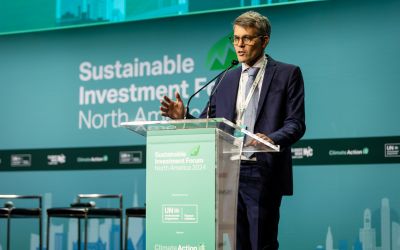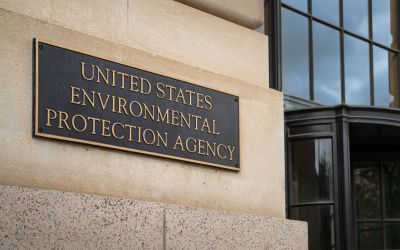Green finance: not green enough

The principles behind this relatively new area of finance are laudable: to leverage public and private funds into the development of the low-carbon infrastructure we need in order to meet the climate goals set out in the Paris Agreement. Renewable energy, energy efficiency, even greener public transport networks are all vital components of a climate-friendly future.
But how should we define “sustainable” or “green” finance, and how can we ensure that more investment is directed to support real, sustainable and low-carbon infrastructure?
The European Union has set up a high-level expert group on sustainable finance, which last month in its interim report recommended “an EU classification of assets and products that captures all acceptable definitions of ‘sustainable’ – that is, that delivers a positive sustainable impact (environmental, social or economic) and is not detrimental to any these three pillars of sustainability.”
The report made numerous recommendations on how to embed sustainability at all levels throughout the investment sphere, establishing new advisory bodies and institutions to drive the EU’s growth in a greener direction.
Most environmental and climate-related debt instruments align themselves with the principles laid out by the Climate Bonds Initiative or the Green Bonds Principles, which set out clear guidelines over the structuring, administration and deployment of green finance.
But are these green finance guidelines green enough?
What they don’t insist on is an actual accounting of the environmental impact over the entire lifecycle of the investment. While the object of the finance - wind farms, solar parks or other low-carbon infrastructure - may well be “green”, is the entire process that leads up to the project’s completion also sustainable?
Green finance ignores its own direct impact on the climate and the environment. None of the emissions embedded in the preparation and issuance of a green bond are covered, nor are the emissions embedded in the construction of a green bond-funded project.
Think of the months spent developing a green bond: the travel, the meetings, the electricity consumed. Think of the tonnes of carbon dioxide and other chemicals and pollutants emitted during the construction of green infrastructure: steel, cement, transport fuels.
And all of this before a single kilowatt of “green” energy is generated, or before a single passenger rides an urban tram network.
Investors should therefore consider “greening” their processes and projects by acquiring options to buy carbon offsets to neutralise their impact.
For example, a green fund with a calculated total carbon footprint of 1 million tonnes of CO2 could buy options for 1 million carbon offsets, and roll that position throughout the lifetime of the bond (typically, seven to ten years).
At the term of the bond, that option could be exercised and the credits retired, guaranteeing that the total carbon impact of the bond or fund has been fully offset.
By buying only the option rather than the underlying credits, the upfront cost is kept to a minimum.
It’s also possible for a fund to contract to buy the required carbon offsets from its own investments, so long as any credits from the project are not being used as part of the financing or being contracted elsewhere. In the past, future revenue from offsets such as Certified Emission Reductions often formed part of project finance, though with current prices languishing near €0.20/tonne this is no longer feasible.
Numerous environmental groups have highlighted the problem of “embedded carbon” in supply chains and industrial processes. This issue has even raised its head in the field of international trade, where there have been calls for some quarters to assess and tax the carbon content of imported goods, in order to properly represent their climate impact.
Green finance has to become truly “green”. To achieve this, lenders need to develop a single set of core principles and guidelines that requires transparency and full disclosure of the complete impact of their investments.
Sustainability is the single most important goal of the century. While the growing attention on cutting our carbon footprint is a welcome development, it needs to go further; sustainability needs to become as important a consideration as the return on any investment.
To help achieve this goal, the finance sector needs to better understand its own role in the fight against climate change. And while directing funding towards green objectives is the correct response, the process of deploying finance itself needs to be “greened”.
The Financial Stability Board’s Task Force on Climate-Related Financial Disclosure released its long-awaited report earlier this year. In the preparation of the report, the Task Force identified more than 400 separate standards for voluntary disclosure of climate impact. Clearly there’s a lot of work to do to shrink this number down to a manageable and comprehensive scale.
Regulators don’t need to reinvent the wheel. There are already widely-acknowledged standards that are incorporated worldwide, but which need to broaden their horizons to cover indirect impacts on the climate. The FSB report makes a convincing case that cradle-to-grave assessment of climate impacts must be introduced in order to properly address the issue.
And of course, there needs to be a price on carbon, to quantify the size of the risk to companies and countries. It needs to be a strong price, and there need to be instruments to manage the risk embedded in that cost.
When it comes to actually putting a price on carbon emissions, companies around the world use a dizzying variety of “shadow prices” when evaluating their investment plans. Depending on the company, carbon emissions carry a price ranging from less than $1/tonne to more than $200/tonne. Can that be right? Does it help?
If we are to accurately measure the environmental and climate impact of green finance, we need to be able to measure the carbon footprint of the entire lifecycle of an investment, using a representative price and a consistent set of guidelines or rules.
Otherwise there is too much conflicting data.
The FSB Task Force report is an ideal opportunity for regulators, lenders and those who operate voluntary disclosure standards to get together and hammer out a single, global standard for carbon accounting, both financial and environmental. If the UN can build a global set of sustainability goals, then surely we can do this.
This article was originally published on the Carbon Pricing Leadership Coalition website.








